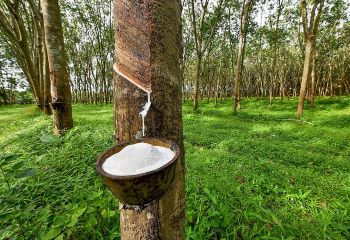
The recommendation by the Parliamentary Standing Committee on Commerce to recognize natural rubber as an agricultural commodity deserves urgent consideration by the government to accept it and initiate policy change to benefit small rubber growers in the Northeast region. Apart from tightening imports to protect the livelihood of rubber growers in the country, recognition of the commodity as an agricultural commodity will unlock agricultural subsidies and open the scope for negotiation of a minimum support price to increase the sustainability of rubber growing as an assured livelihood.
The parliamentary committee points out that natural rubber in its dry form is the only plantation commodity with maximum customs duty fixed at a notably low level of 25%, and it is necessary to reassess and adjust this rate for natural rubber imports to better align with the country's economic and trade priorities, ensuring fair protection for domestic producers.
Poor industrial growth of rubber-based industries creates a disconnect between the activity of growing the crop, which they see as an agricultural activity, and the produce as industrial raw material. The establishment of major rubber based industries like tyre manufacturing units and the reclassification of the commodity can boost the confidence of rubber growers and attract new growers to boost production. The Rubber Research Institute of India releasing three high-yielding and climate-resilient clones in the region reflects initiatives to address issues of climate change and sustainability of the livelihood in the sector. The committee observes that rising temperature, changing rainfall patterns, and increasing drought are experienced in various rubber growing regions.
The observation of the panel about a study carried out to analyze the deviation of maximum and minimum temperature from the optimum requirement for rubber growing regions in South and Northeast India showing an increase in daily and weekly maximum temperature in several rubber growing regions signifies the importance of ensuring rubber cultivation climate-resilient sustainability of livelihoods associated with it.
Another assertion by the committee that the success of "Make in India" in the rubber industry primarily depends on adopting a "Grow in India" approach underscores the crucial importance of the reclassification of the commodity. Persistent shortfall in domestic rubber production will only make the industry heavily dependent on imports, and the potential of rubber growing in the northeast will remain untapped.